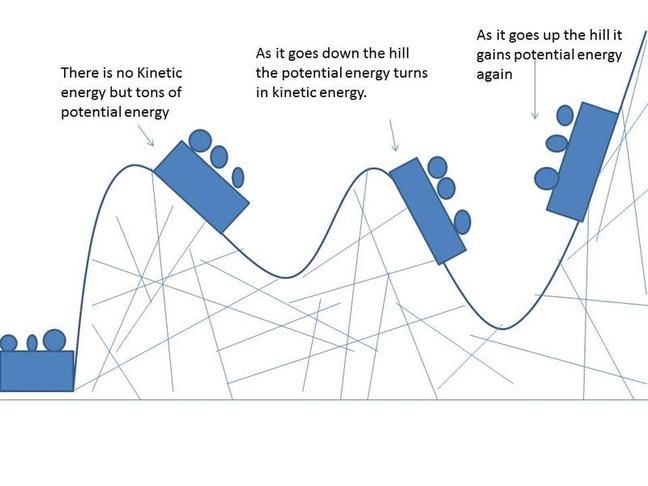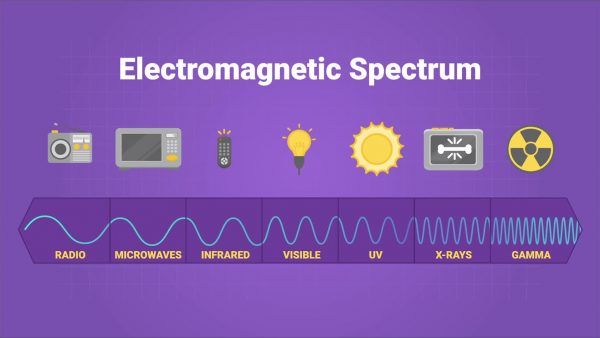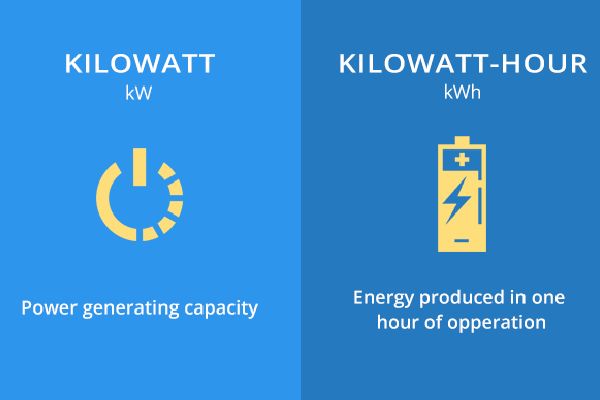What Is The Energy During The Movement Of The Particles?
Particles refers to tiny pieces of matter such as atoms, molecules or subatomic particles. The movement of particles involves them changing position over time. Particles are constantly vibrating, rotating or traveling from one place to another. This motion and locomotion of particles is central to understanding their kinetic energy.
When particles move, they possess kinetic energy which is the energy associated with motion. The faster the particles move, the more kinetic energy they have. Their kinetic energy is directly related to the speed of their movement. Besides kinetic energy, particles can also have potential energy which depends on the particles’ position or state. The total mechanical energy of moving particles is the sum of their kinetic and potential energies.
This article will provide an overview of the different energies exhibited during the movement of particles. It will explain kinetic and potential energy, conservation of energy, energy transfers and provide examples and applications related to particle motion and energy.
Kinetic Energy
Kinetic energy is the energy that an object possesses due to its motion. The kinetic energy of an object depends on two variables: mass and velocity. The more massive an object is and the faster it moves, the more kinetic energy it has.
Kinetic energy can be calculated using the following formula:
Ek = 1/2 mv2
Where:
- Ek = kinetic energy (in joules)
- m = mass (in kilograms)
- v = velocity (in meters per second)
Kinetic energy is directly proportional to the object’s mass and to the square of its velocity. This means that an object moving at twice the speed has four times the kinetic energy. Kinetic energy is frame dependent, meaning it depends on the observer’s frame of reference.
Kinetic energy is particularly important for collisions and impacts. An object with greater kinetic energy has a greater effect during impact with another object. The kinetic energy present becomes transferred into other energy forms during the collision.
Potential Energy
Potential energy is the energy that an object possesses due to its position or state. For example, a book sitting on a table has potential energy due to the force of gravity acting on its mass. The higher the book is placed above the floor or the ground, the greater its potential energy. When the book falls, its potential energy is converted to kinetic energy – energy of motion. Other types of potential energy include elastic potential energy and chemical potential energy.
Potential energy can be calculated as mgh, where m is mass, g is acceleration due to gravity, and h is height. The units of potential energy are Joules (J). Potential energy increases as the object is raised to greater heights above some reference point, usually the ground or floor. When the object falls, the potential energy decreases and kinetic energy increases by an equal amount, demonstrating the conservation of total mechanical energy in the system. Understanding potential energy is useful for analyzing mechanical systems, designing structures and mechanisms, and more.
Total Mechanical Energy
Total mechanical energy is defined as the sum of an object’s kinetic energy and potential energy. Kinetic energy is the energy associated with motion, and potential energy is stored energy based on an object’s position or configuration. Adding together these two types of mechanical energy gives the total mechanical energy of an object or system. This concept stems from the principle of conservation of energy.

For example, consider a ball rolling down a ramp. At the top of the ramp, the ball has only potential energy due to its elevated position in the gravitational field. As the ball rolls down the ramp, this potential energy gets converted to kinetic energy associated with the motion of the ball. The total mechanical energy remains constant, being transferred between potential and kinetic forms.
In mathematical terms, total mechanical energy (E) is expressed as:
E = Kinetic Energy (KE) + Potential Energy (PE)
E = KE + PE
Understanding the concept of total mechanical energy and how it remains constant even as energy transfers between potential and kinetic forms is crucial for analyzing many mechanical systems and processes. Conserving total mechanical energy is a fundamental principle of physics.
Conservation of Energy
The law of conservation of energy states that energy can neither be created nor destroyed – it can only be transformed from one form into another. This means the total amount of energy in an isolated system always remains constant.
For example, when a ball falls off a table, its potential energy gets converted into kinetic energy as it speeds up due to gravity. The initial potential energy of the ball on the table equals its kinetic energy just before hitting the ground. Energy has simply been converted between different forms, but the total amount of energy remains the same.
The conservation of energy principle is extremely useful for analyzing mechanical systems. If we know the initial energy, final energy, and any energy transfers or transformations in between, we can calculate unknown values using the equation: initial energy + energy gained = final energy + energy lost.
This fundamental law holds true for all isolated systems, making it one of the most important concepts in physics. Whether it’s roller coasters, pendulums, springs, or any other mechanical system, the total energy of the system is always conserved.
Energy Transfers
Energy can transfer between kinetic and potential forms in physical systems. Kinetic energy is the energy of motion. An object that is moving has kinetic energy. Potential energy is stored energy that has the potential to become kinetic energy. There are various types of potential energy like gravitational potential energy or elastic potential energy.
A simple example of energy transferring between kinetic and potential forms is a ball bouncing. When the ball is dropped, it accelerates due to gravity. Its velocity increases, so its kinetic energy increases. As it hits the ground and compresses, the kinetic energy is momentarily converted into elastic potential energy stored in the deformation of the ball. As the ball bounces back up, this potential energy is converted back into kinetic energy as the ball gains velocity again. This cycle continues with energy transferring between kinetic and potential forms each time the ball bounces.
On a larger scale, a roller coaster exhibits energy transfers too. At the top of a hill, a roller coaster has gravitational potential energy. As it descends, this potential energy is converted into kinetic energy increasing its velocity. At the bottom, the kinetic energy starts being converted back into potential energy as the coaster travels up the next hill. The transfers between kinetic and potential energy allow roller coasters to operate without any external energy source.
Understanding energy transfers between forms is important for analyzing many mechanical systems. Being able to track where energy is stored and where it is in motion is crucial for modeling and designing efficient systems.
Examples
Particle movement and energy can be demonstrated through a variety of examples from everyday life:
- A ball rolling down a hill – The ball has kinetic energy as it rolls and gravitational potential energy depending on its height on the hill. As the ball rolls down the hill, its potential energy is converted to kinetic energy.
- A rollercoaster going over a hill – The rollercoaster cars have kinetic energy as they move along the track. At the top of a hill, they have gravitational potential energy that gets converted to kinetic energy as they go down the other side.
- A pendulum swinging – The pendulum bob has kinetic energy at the bottom of the swing and gravitational potential energy at the top of the arc. The energy converts back and forth between potential and kinetic as the pendulum swings.
- A basketball bouncing – When the ball hits the ground, some of its kinetic energy going down is converted to elastic potential energy stored in the deformation of the ball. This potential energy is then converted back to kinetic energy as the ball bounces back up.
- A compressed spring – Compressing a spring gives it elastic potential energy. When released, this potential energy converts to kinetic energy as the spring decompresses and shoots out.
In all these examples, we see energy transforming between potential and kinetic forms during the motion of particles and objects. The total mechanical energy remains constant, obeying the law of conservation of energy.
Applications
Particle energy concepts have many important real-world applications in physics and engineering:
- Kinetic energy is used to calculate the destructive power of projectiles like bullets or rockets based on their mass and velocity.
- Potential energy has applications in estimating the energy stored in systems like dams, springs, and raised weights.
- Mechanical energy concepts allow engineers to design rollercoasters, swings, and other amusement park rides.
- Understanding energy transfers helps optimize systems like heat engines and electric generators.
- Applying conservation of energy principles is key for analyzing collisions, explosions, machinery, and more.
These energy concepts are fundamental tools used across science and engineering disciplines. Mastering the energy during particle motion provides a foundation for tackling more complex systems and developing innovative technologies.
Summary
To summarize, particles can have different forms of energy depending on their motion or position. Kinetic energy refers to the energy of motion – faster moving particles have higher kinetic energy. Potential energy refers to stored energy due to position – particles at higher elevations have more gravitational potential energy. The total mechanical energy of a particle is the sum of its kinetic and potential energies. This total energy is conserved, meaning it stays constant, as particles move between different positions and velocities. Energy transfers between kinetic and potential forms, but is never lost. Understanding how particles gain and lose different types of energy as they interact is crucial across many scientific fields and applications.
Conclusions
In conclusion, energy is an essential concept in physics that describes the capacity to do work. The energy associated with motion is kinetic energy, while stored energy is known as potential energy. The total mechanical energy of a system is the sum of its kinetic and potential energies. One of the most important laws of physics is the law of conservation of energy, which states that energy can change form but is never created or destroyed. Understanding how energy transfers between different objects and systems has many practical applications in science, engineering, and everyday life.
This overview explored the basic types of mechanical energy during particle motion. Kinetic energy depends on mass and velocity, while potential energy relies on height, charge, or structural arrangement. Tracking energy transfers helps explain observations and make predictions. Examples like swinging pendulums, rolling balls, and chemical reactions demonstrate how energy conservation applies. Knowledge of energy and its behavior empowers innovations in transportation, power generation, computing, and more.
By studying energy, we gain insight into the unseen atomic world. The capacity to do work is a fundamental driver of all activity and change in the universe. A grasp of energy concepts illuminates the mechanics of motion, change, and dynamics at every scale.





